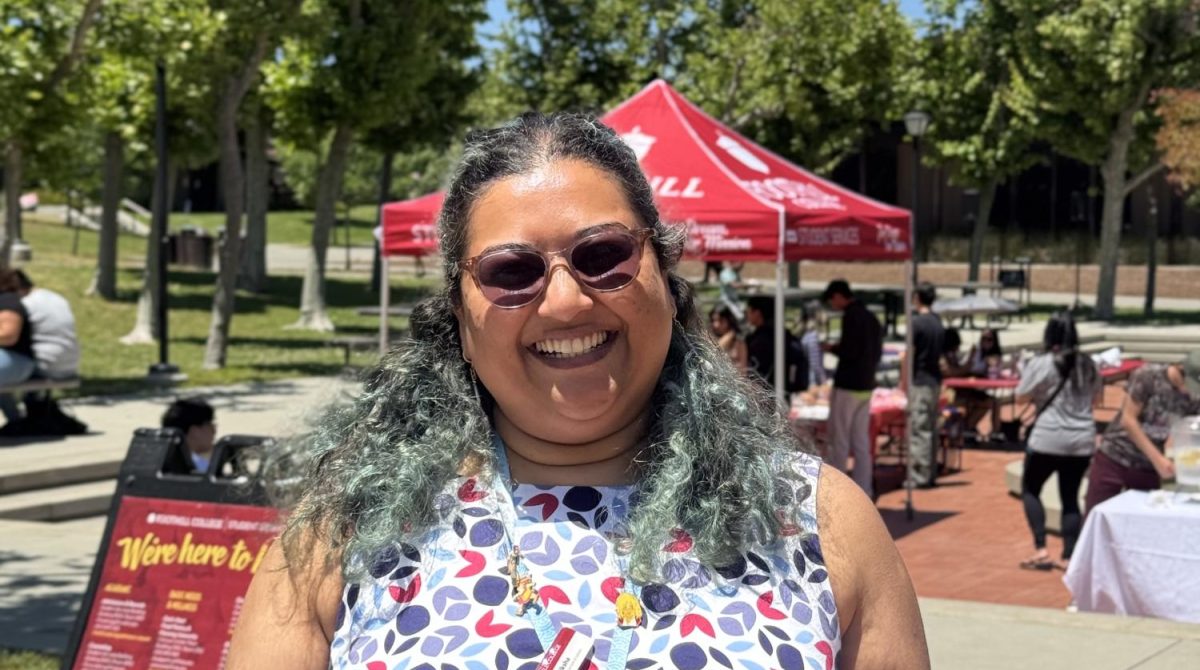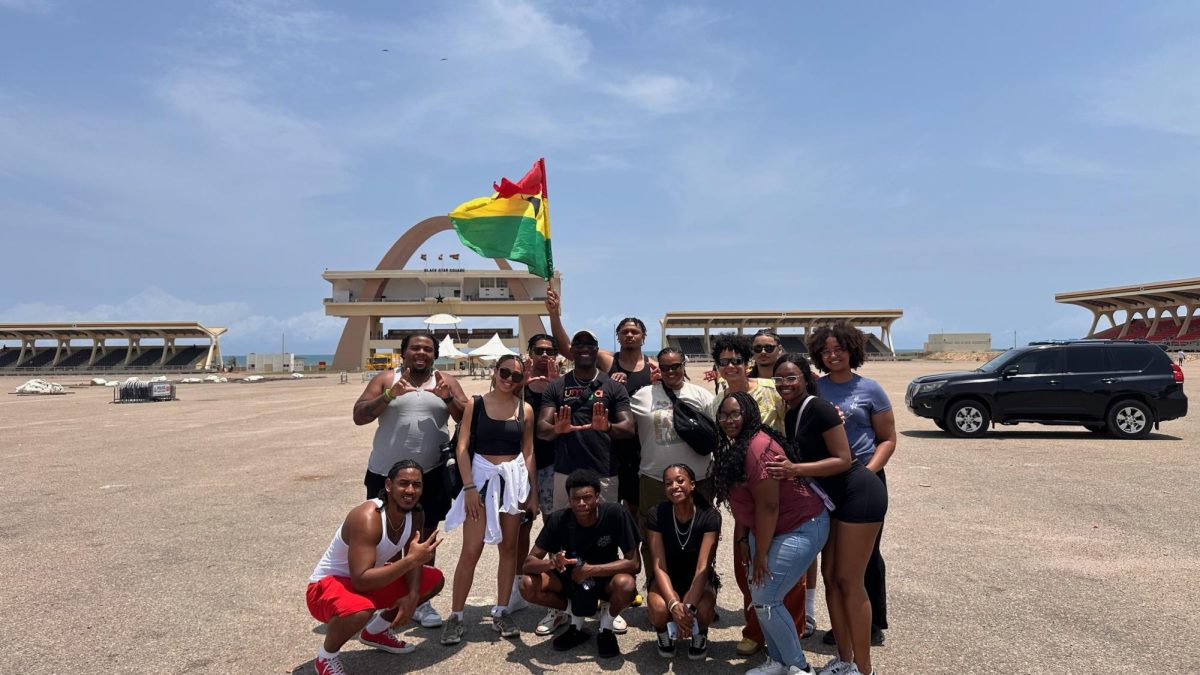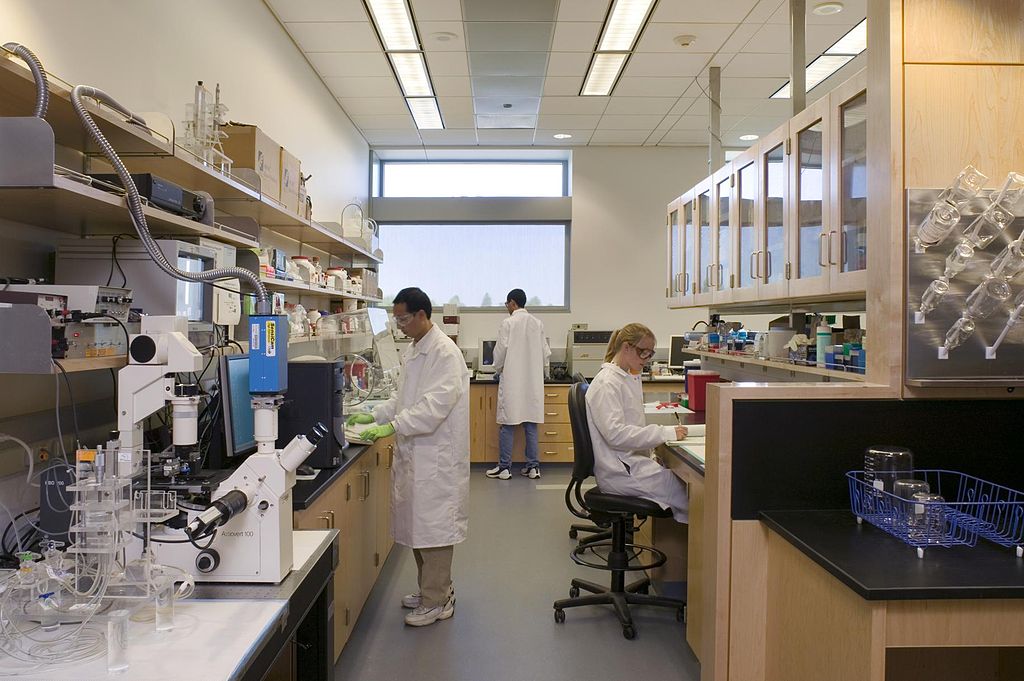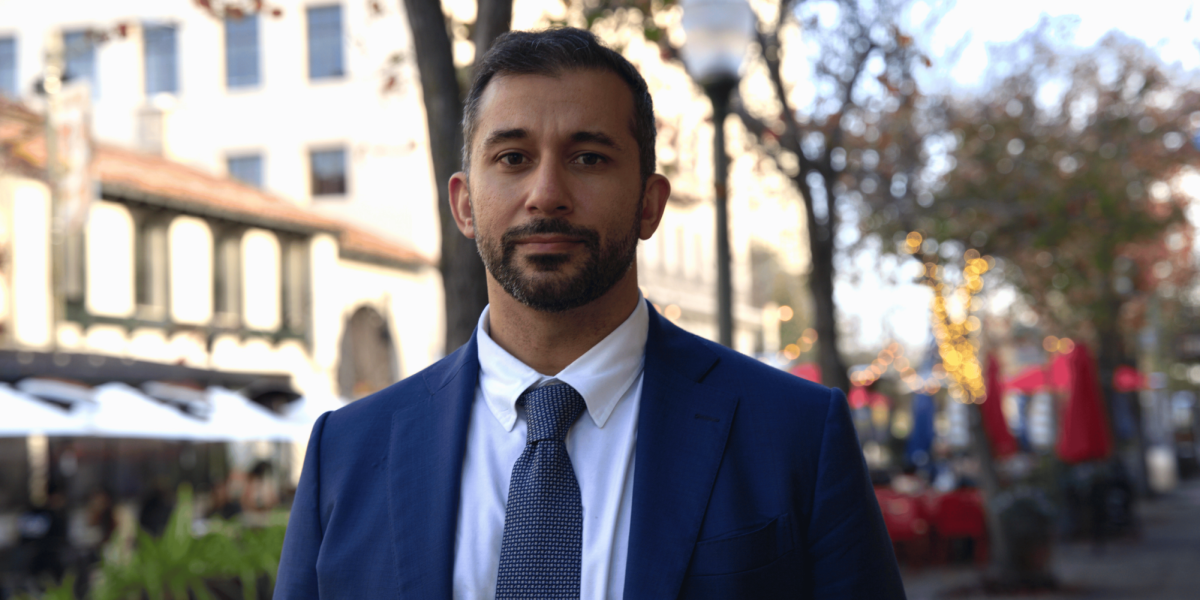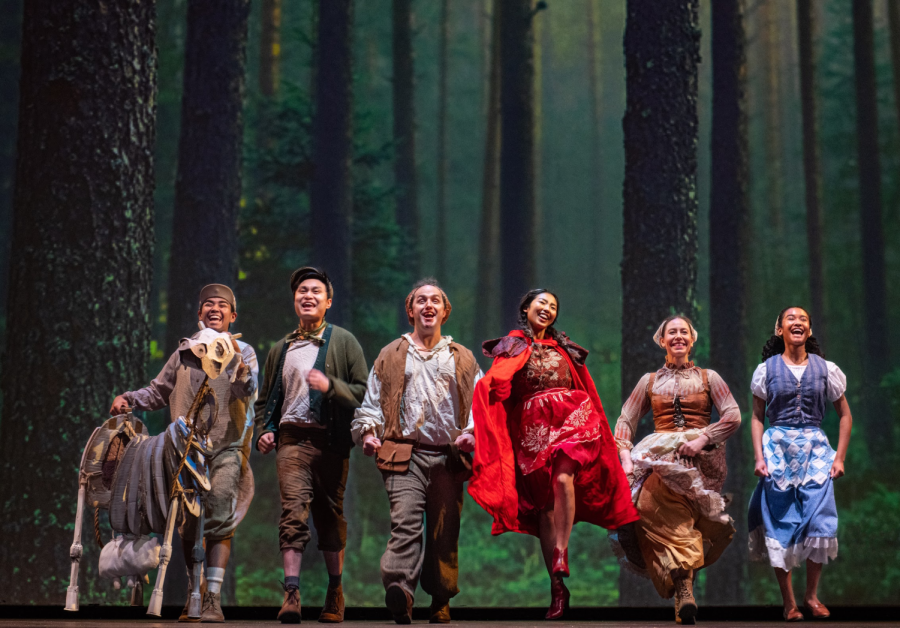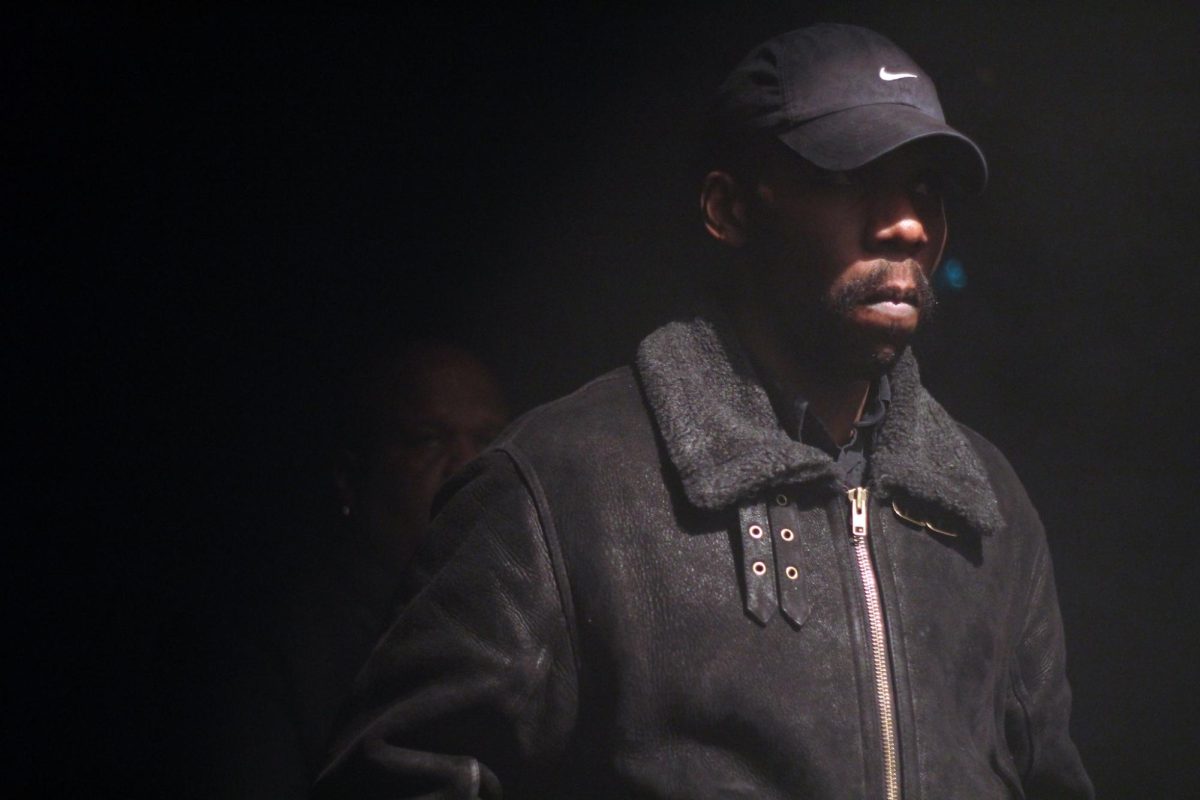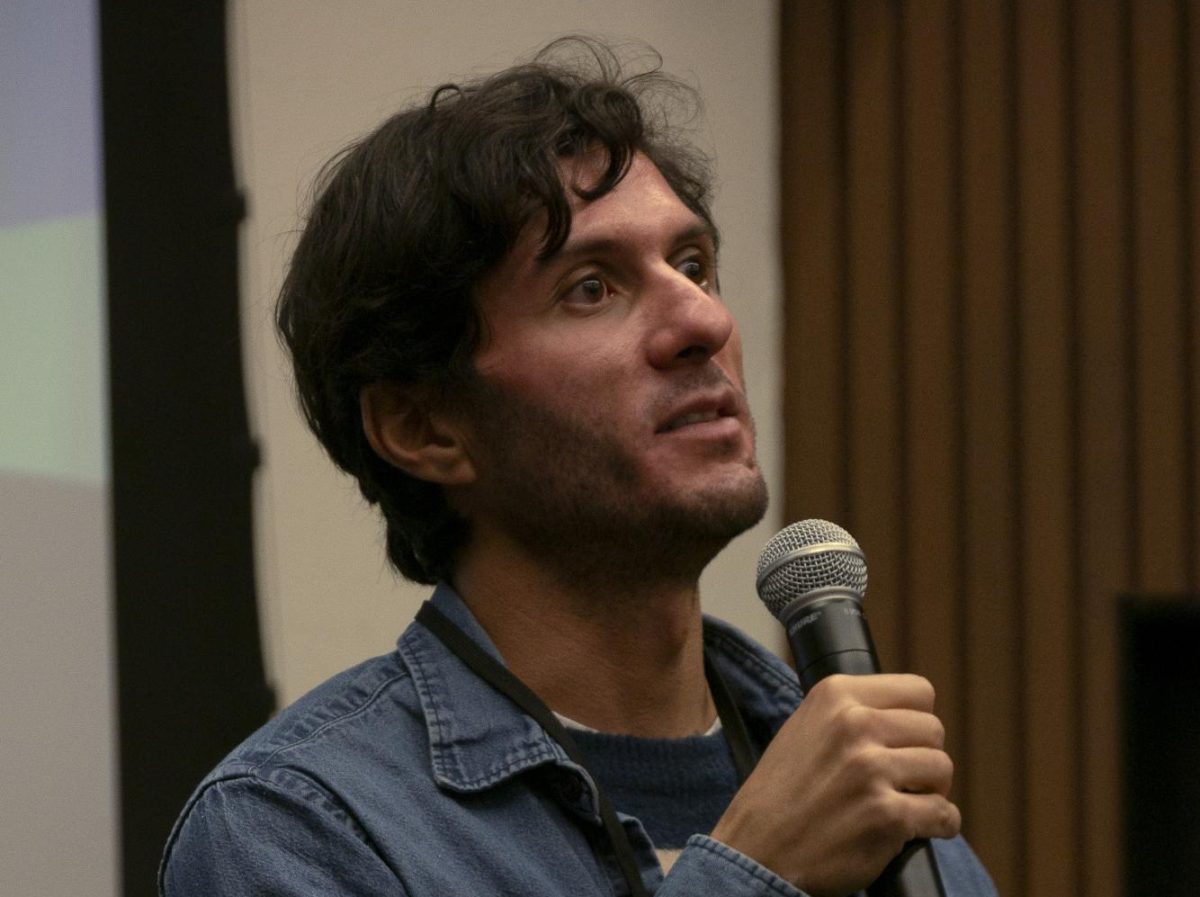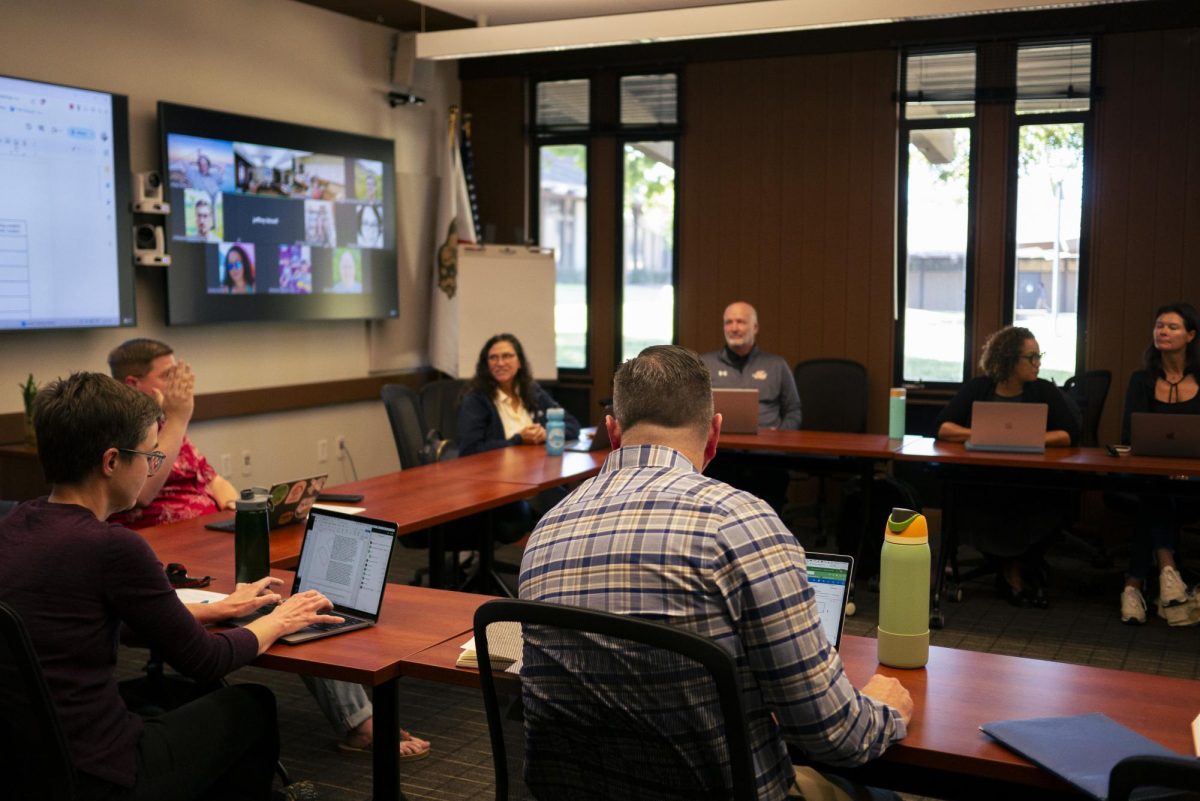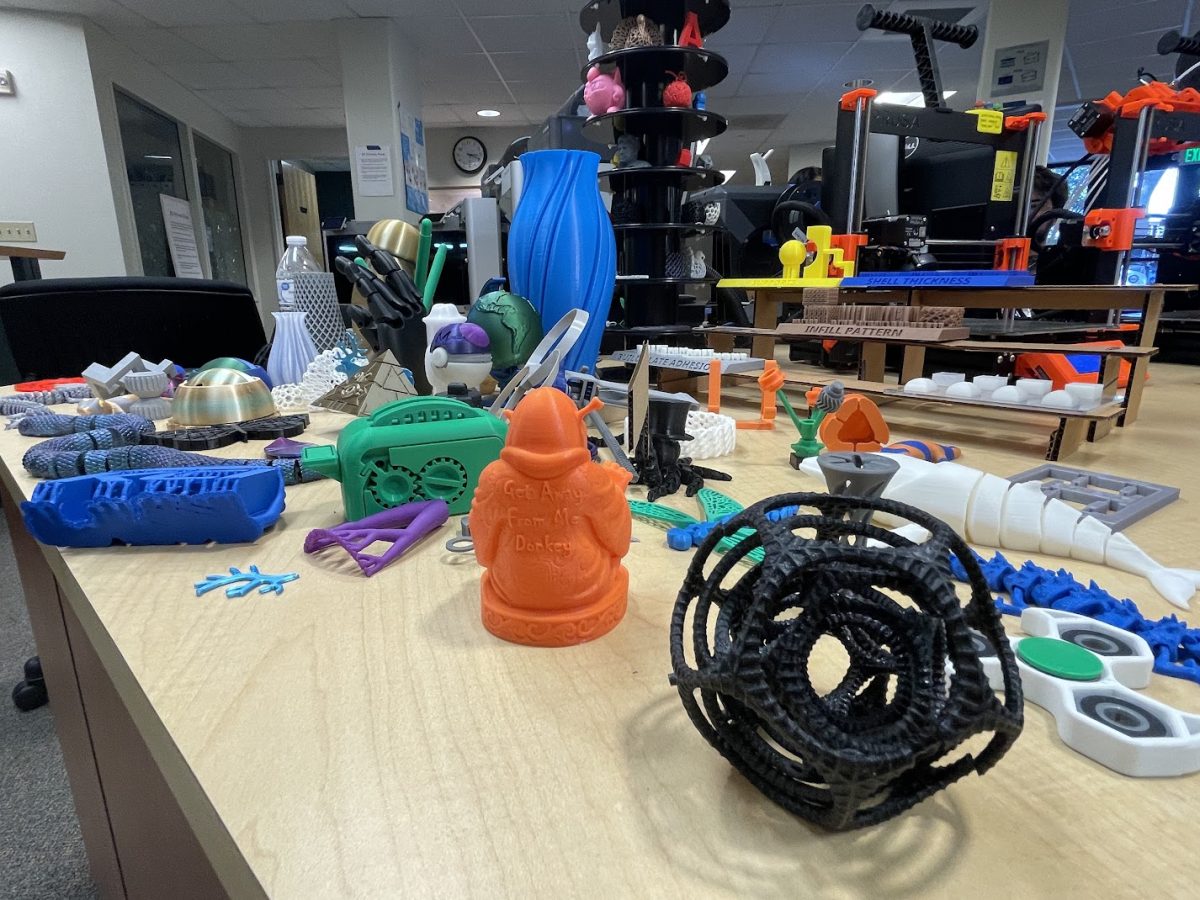
One half of the winning team, Andrew, with his magnet. Said magnet in action after the competition.
Foothill’s Physics students gathered together in the Physical Sciences & Engineering Center (PSEC) quad for their end-of-year celebration on Friday, June 14th. This celebration, the Physics Olympics, was characterized by food, fervor, and explosive fun!
The event started off with a bang: Physics Instructors Frank Cascarano and David Marasco poured a small amount of liquid nitrogen into a plastic bottle, screwed the cap on, and placed it into a bucket of water. After hastily throwing a few tennis balls in along for the ride, the professors ran for cover, shouting “Fire in the hole!” A few moments later a grand explosion occurred, the water and tennis balls flying into the air through swirls of nitrogen, eliciting a chorus of “woaaaahhhs” from the crowd.
Not long after, the quad was abuzz as students dispersed to chat in groups and inspect the Robotics Club’s various gadgets, including a robotic arm programmed to play chess against a worthy opponent. A number of students carried fairly large cylindrical metal objects wrapped in tinny wire–upon inquiry I discovered they were electromagnets, made for the Physics 4B class.
These magnets were to be the subjects in a competition at these Physics Olympics–the prize being extra credit points (and perhaps a touch of smugness). Whoever’s electromagnet was the strongest, proven by the amount of paper clips it could attract and lift when powered by a supply of direct current, was the winner.
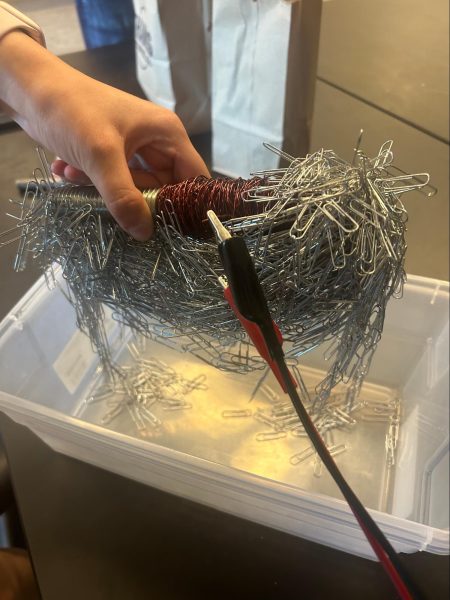
Rebecca’s magnet in action (not during the actual competition).
According to first year Physics 4B student, Rebecca Blau, “[the] electromagnets are made of coils of wire with a metal core ([theirs] made of galvanized steel). The coils of wire (“magnet wire” or insulated copper wire) create what is called a solenoid, which creates a constant magnetic field inside of it when hooked up to a battery. The magnetic field becomes very strong when a metal core is placed inside of it. The core becomes magnetized by electromagnetic induction, which is what allows our magnet to pick up the paper clips!”
When Cascarano called out to his 4B students that it was time to set up, hoards of eager competitors flocked towards a table on which a six volt direct current power supply, a scale, and tub of paper clips rested. Physics Instructor Ellen Judd manned the power source and recorded each team’s paper clip winnings.
As teams began approaching the table to put their hard work to the test, friends in opposing groups exchanged taunting words in good fun. Students stood on the tips of their toes and even climbed atop chairs to get a good view of events at hand. As attached paper clips were weighed, cheers and exclamations of shock were shouted out, not unlike those heard during a sports match.
In the race for the coveted extra credit points, it appeared slow and steady did, in fact, emerge victorious. A magnet’s strength was not the only thing that determined the amount of paper clips it could capture; the unwavering stability and patience of the hands transferring the clip-clad magnet from the loading zone into the weighing bucket was a considerable factor.
Two teams demonstrated skill in perfecting this balance of strength and steadiness: Rebecca Blau, Ray Migdal, and Ethan Hua forming one, and Timon Becker and Andrew Richmond forming the other.
The two groups were head to head in the competition, taking advantage of the multiple trials they were allowed, until Becker and Richmond ultimately prevailed, the weight of paper clips held by their magnet breaking 700 grams. But the runners up did not go down without a fight.

Frank making liquid nitrogen ice cream.
Throughout this charged competition, another source of amusement was the various students puttering about the quad behind the wheel of the Engineering Club’s go kart. As each new person drove the club’s creation past the table, its presence signaled by the motor’s slight buzzing, heads would turn away from the magnets to watch.
What finally drew the persistent contestants away from the competition was the prospect of liquid nitrogen ice cream, the making of which was demonstrated by their professor. As a helper poured liquid nitrogen into a bowl containing a standard vanilla ice cream base, a smiling Cascarano mixed away at the concoction, explaining the reaction at hand. The liquid nitrogen froze the milky mixture at an incredible rate; after waiting for the element to fully evaporate, it was served up to the wide-eyed audience of students.
After this final spectacle, the crowd slowly began to fizzle out. From this event it is clear that the Foothill Physics department knows how to put on a show!





